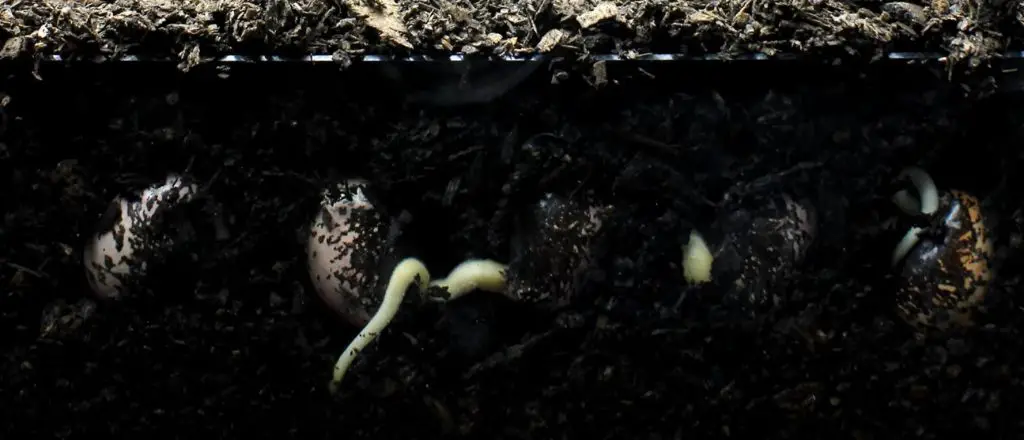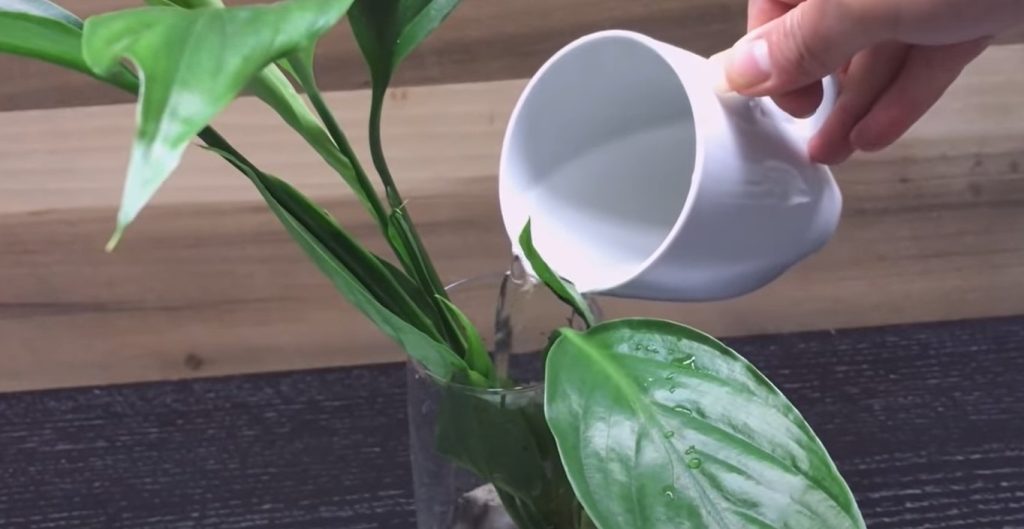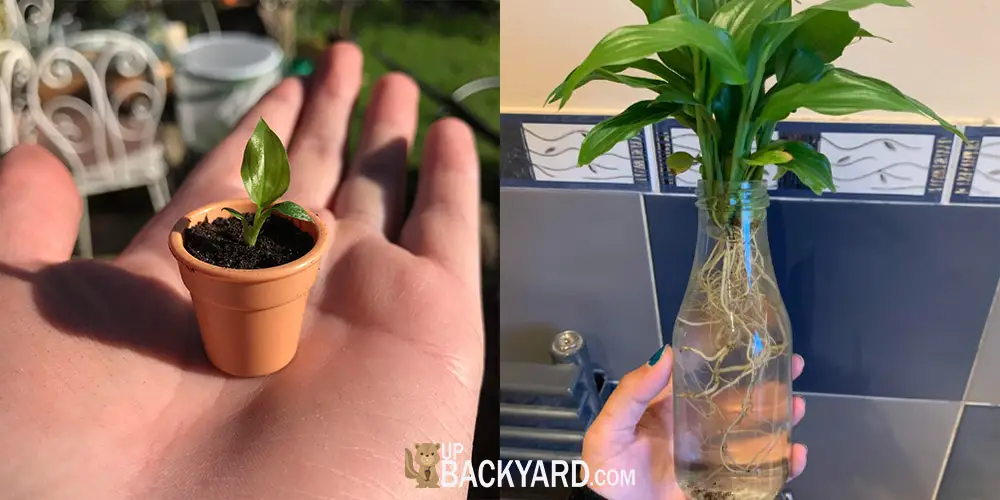Water lilies are beautiful flowers that typically reside on the lily pads floating through the water.
They can make any water feature that you have, from your pond to just a small fountain, beautiful with the extra touch of color.
But have you ever wanted to know how you can propagate peace lilies so you can have them in your own water feature?
We don’t think that the process of doing so is too difficult, so let’s learn how to propagate water lilies in the water.
What is Propagation, and Why Does It Matter?
When gardeners talk about propagating their plants, the terminology can become a bit confusing. However, if you want to propagate water lilies, you have to know what the term means.
Propagation means to “breed” a plant by using a piece of the parent plant. Essentially, propagation is how we get more plants from a single plant without relying on its form of reproduction.
Many times, propagation is done by using a cutting of a plant, or a small piece of the plant that will later be able to root in the proper setting.
Propagation is one of the easiest ways to grow your own plant as you don’t have to rely on growing a plant from the seed.
However, you can also propagate seeds as well. However, the difference between propagating from seed and just growing a plant from the seed is that you don’t stick the seed right into the ground. Instead, you use specific methods to get your seed to sprout.
Propagation just makes it easy to grow your own plant that you like. Seeds, cuttings, and some other parts of the plant are used to start a whole new plant.
Once you start propagating, you don’t have to stop the process until you feel that you have enough plants. You could propagate forever if you wanted to.
How to Propagate Water Lilies in the Water
To remind you, propagating a plant can use several different parts of the plant. When it comes to water lilies, you can propagate them using seeds or the lily pad itself.
The specific method that you will use will depend on what part of the plant you use.
Propagating from Seed

Propagating from the seed will take more time but it certainly is still an easy process.
If you already have a water lily in your possession, you can use the seeds that are produced from the plant after the flower blooms.
The flower of a water lily will only bloom for a few days before it disperses many seeds out into the rest of the water. If you can collect these seeds, you can then propagate them and grow more water lilies.
If this is your first water lily, you can purchase water lily seeds from a number of different sources. Depending on what is local, you might even be able to purchase these seeds at a farmer’s market.
Once you have your seed, then you can get started on the propagating. Get a small container (glass or clear plastic works best) and fill it about halfway with water.
You want to make sure that the seeds will still have room against the containers to grow so they don’t topple over the rim of the container.
You must remember that propagation takes time and that you won’t get seedlings overnight. Place some seeds (water lily seeds are small so you’ll want to add several to a container) in your container with water.
Change out the water every few days so that your seeds have fresh water with all of the oxygen and other nutrients that the water comes with.
Over time, anywhere from a few days to over a week, the seeds will start to crack, and the start of a stem will poke through. That is your seedling.
Now, you will want to keep your sprout in the water as it continues to grow. A great way to make sure that this seedling stays properly moist while also building a foundation is to add clay to the roots.
Make sure that you have completely pure clay. Take a little bit of it and fold it to the roots, covering them so that not much is sticking out. As the sprout gets bigger and bigger, add more and more clay for added stability.
Again, as your sprout gets bigger, you will want to transfer it to a bigger pot. You will be in this cycle of adding clay and transferring it to bigger pots as the sprout gets bigger.
Eventually, you will have a full water lily that you can put into your pond or fountain!
You might like: Can I Use Cactus Soil for Peace Lily? (Care & Repot Peace Lilies)
Propagating From Leaf

Propagating from leave, or by the entire lily pad to be more specific, is much like the seed method. However, you start off a little bit differently.
You will want a larger container of water than you had for propagating from seed. A bucket full of water should be perfect.
Place the lily pad into the bucket full of water. You will want it to stay completely submerged, so place a rock onto the water to keep it in place. A smaller rock that doesn’t completely cover the lily pad is preferred.
Keep this buck in indirect sunlight (by a window) to make sure that the plant is getting the light it needs and is staying at the proper temperature of at least 80°F.
Once the lily pad sprouts, you can move the sprout into a smaller container that allows to sprout to have 2-3 inches of water above the roots. You should also place dirt around the roots to encourage growth.
The propagation process will take about 2-3 weeks for a lily pad to sprout. Once the spout has reached a sufficient size, you can move it to your water feature.
A sufficient size will depend on how big your water feature is. For a pond, you will want your lily pad to become closer to fully grown.
4 Tips and Reminders for Propagating Water Lilies in the Water
Change Water Regularly
When propagating any plant in the water, many people forget that the water needs to be changed out.
As a plant grows in the water, the roots absorb the nutrients, such as oxygen, from the water’s supply.
However, since this water is stationary and doesn’t flow, the nutrient level will deplete and not recover.
Changing the water makes sure that your sprout consistently gets enough nutrients that it should have from the water it is growing in.
Watch Out for Crown Rot
As any plant is growing in the water, you must watch out for different diseases that can infect these water-based plants. Crown rot is a disease that can infect and kill off your water lilies.
If your water lily gets crown rot, you will see the leaves of the plant yellow and curl in. The lily pad will grow spotty and pieces of the plant will pull away with too much ease.
The main causes of crown rot are pests. They chomp away at the plant and expose them to rot.
To avoid crown rot, make sure that your water lilies look completely healthy when you buy them. Also, make sure to watch out for pests and to spray them away when you do see them.
Don’t Grow Water Lilies with Hornwort
Water lilies can typically do very well alongside other aquatic plants. Whether you are growing your water lilies in a tropical setting or a freshwater setting, these plants don’t mind being near other aquatic flowers and greenery.
Yet, you should make sure that they don’t grow alongside hornwort. If you have hornwort in your pond, don’t add water lilies and the other way around.
Hornwort releases a chemical into the water as it grows. This chemical isn’t super harmful, but it can stunt the growth of a water lily.
This makes it a nonideal growing space for water lilies to be in. You want your flowers to be big and beautiful, but this can’t happen when chemicals are being released into the water that prevents them from getting bigger.
Propagate Indoors or Outdoors
The great thing about propagation is that you can do it both indoors and outdoors. It all depends on what is easier for you and your water lily.
If you do propagate indoors, you just have to make sure that your sprout gets enough light and stays warm enough.
Propagating outdoors means you have to be a bit more aware of pests and weather fluctuations.
Final Thoughts
Propagating water lilies in the water is a super easy process, all it takes is time. Once you get started, you can be propagating water lilies forever!
If you have ever propagated a plant in the water, let us know what kind of plant and how it went in the comments. If you have any other tips that you want to share, feel free to leave those in the comments as well.
